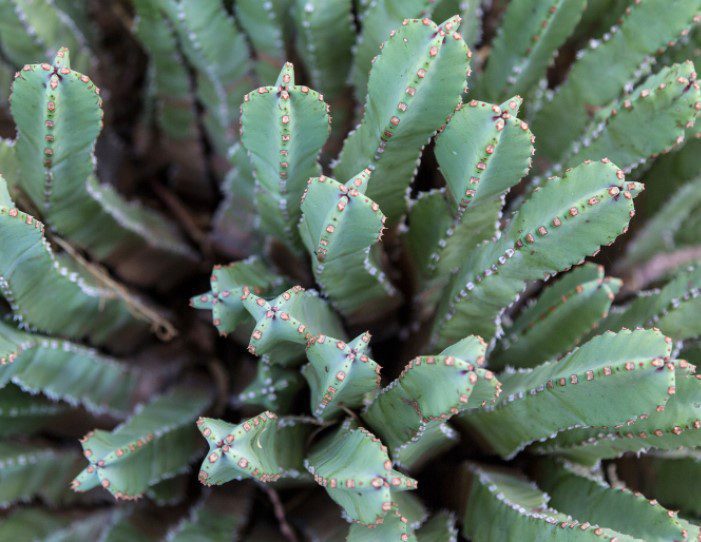Fairy Castle Cactus
Cereus Tetragonus is a native of North America, but it is not suitable for cultivation outside USDA zones 10-11. The plant’s colorful name, Cereus tetragonus, refers to its many vertical stems that look like spires or turrets.
This succulent has spines that rarely bloom. It is easy to grow fairy castle cactus in your garden. These delicately limbed Cacti have all the charm and beauty of fairy tale castles.
Classification of Fairy Castle Cactus
Experts classify the cactus as Acanthocereus Tetragonus. It was also given the species name hildmannianus by the genus Cereus. The real puzzler is the subspecies. The fairy castle cactus is available in either the subspecies Uruguayans or monstrose.
The plant is beautiful and a great addition to your home, regardless of its scientific name.
Some Interesting Details about Fairy Castle Cactus Plant
Cereus Tetragonus is a native of the North, South, and Central Americas. This slow-growing plant will eventually grow to 6 feet (2 meters) in height.
The fairy castle cactus plant has five sides with woolly-based spines running along each plane. As they age, the limbs turn a bright green to woody and brown. Over time, different branches form, which gradually lengthen and create an interesting silhouette.
The fairy castle cactus seldom blooms. Cacti require perfect conditions for flower production. Cereus plants bloom at night. The flowers of the fairy castle cactus are big and white and will not bloom until they reach ten years. Examine any flower that comes with your cactus.
This is most likely a fake flower used to market (usually yellow, not white). It is not necessary to remove the fake fairy castle flower as it will eventually fall off.
Cereus columnar cactus Another commonly planted cactus in gardens here is the columnar cactus or the cereus. It has an upright triangular (sometimes with four- to six- instead of three-angled stems).
It has upright, slender stems that climb and are cultivated for its attractive shapes. Its attraction comes from the form and color (dark green) and the ability to impact low-maintenance gardens, such as rockeries or rock gardens.
The slender-stemmed species (of tropical American origin) climb over rocks and upon trees. The large flowers are usually pinkish-white and open at night (like the Epiphyllum or Keng Hwa).
These dainty and showy white flowers are scented. Some even bear large colorful fleshy fruits edible, like the Hylocereus undatus or Dragon Fruit exported by Vietnam and Nicaragua to many countries, including Malaysia. There are viable seeds in these fruits, and they can be collected and sown.
Cereus Name Origin
The name cereus is derived from the Latin cera, meaning wax or torch-like. They bear spines from their areoles like other cactus plants.
These cereus columnar cacti present an impressive picture with their strange columnar shapes and ribbed stems and can give a fascinating effect in a garden landscape. They are excellent subjects for low-maintenance gardens, with their white or cream or pinkish funnel-shaped flowers extend outwards gracefully.
Cereus tetragonus
There are the four-ribbed cereus (C. tetragonus), the three-ribbed (C. triangularis), and the six-ribbed (C. hexagonus). They are all similar except for the number of ribs or angles on the slender stem.
This “free flowering” night-flowering cereus is a common garden plant, and once mature, it will flower well during the hot, dry season or when conditions are conducive.
When it is in full bloom, it is a sight to behold. The lovely fragile blooms are pure white with a tinge of pink at the base. They are short-lived, but with the new buds on every new flowering stem, flowering is continuous.
Fairy Castle Cactus Care
The plants in my garden were planted in two clumps along with the chainlink fencing for two purposes:
* To deter intruders, and
* For aesthetics, since the plant blooms regularly.
These two clumps started as single 45cm stem cuttings with a diameter of 5cm. The plant soon grew into many stems. Each becomes a clump in fewer than three years and required little maintenance except for the quarterly application of an organic or granular semi-organic NPK fertilizers.
It can also be seeded in a pot or big containers. It is best planted in a permanent position in the ground because it would be difficult to repot or transplant once it has reached a certain size.
Cereus cactus grows well in sandy or gritty soil, but there must be good drainage and full all-around sunshine.
The main requirements are open, well-drained soil, and good sunshine. It does not need very fertile soil, as in the case of most cacti.
Many enthusiasts often have the misconception that cacti can be used for indoor decoration or as indoor materials. This can be fatal, and by the time the plants show signs of deterioration, it is too late to salvage them.
Do not try to grow cacti in clay or damp soils. An open and well-aerated or gritty planting medium is necessary.
Cereus tetragonus (C. triangularis) will start to flower after two or three years.
The flowers are not unlike those of the Epiphyllum; they are pure white and extend outwards gracefully like a torch.
The buds open between 9 pm and 10 pm, and by 11 pm or 11.30 pm (as observed on my plants in the garden), most of the flowers open to a width of 10cm.
The opened flowers are a lovely sight by midnight: the petals are pure white, and the sepals pale green.
When first opened, the flowers are slightly scented. They are short-lived and will remain open until a little past midnight or towards early morning. Most of the blooms that have opened will close as the day gets brighter.
The unopened buds will flower the following night.
























